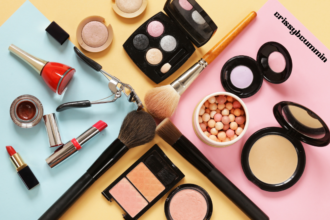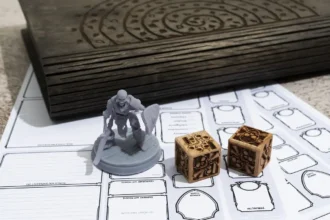Rhinoplasty, commonly known as a nose job, is a popular surgical procedure used to enhance both the appearance and function of the nose. Whether it’s for cosmetic reasons, to improve breathing, or to correct damage from an injury, rhinoplasty can change a person’s life. However, the decision to undergo nasal surgery comes with its own set of challenges and considerations. In this guide, we’ll explore the different types of rhinoplasty, the problems that can arise, and the solutions that make this procedure a highly effective and versatile option.
What is Rhinoplasty?
Rhinoplasty is a surgical procedure aimed at reshaping or repairing the nose. This can include modifying the size or shape of the nose, correcting breathing issues, or repairing damage caused by trauma. People may opt for rhinoplasty for various reasons: improving facial symmetry, correcting nasal obstructions, or even for medical reasons such as fixing a deviated septum.
The procedure can be done for cosmetic reasons or functional ones, depending on what the individual needs. Whether you’re looking to enhance your appearance or solve breathing problems, rhinoplasty can provide noticeable improvements. But like any surgery, it’s essential to consider both the potential benefits and challenges before making a decision.
Types of Rhinoplasty
Rhinoplasty comes in different forms, each catering to a specific set of needs. These include cosmetic rhinoplasty, functional rhinoplasty, revision rhinoplasty, and non-surgical rhinoplasty. Let’s take a closer look at each type.
Cosmetic Rhinoplasty: Enhancing Appearance
One of the most common reasons people choose rhinoplasty is to enhance their appearance. Cosmetic rhinoplasty focuses on reshaping the nose to improve facial harmony. This may involve altering the nose’s size, shape, or the angle between the nose and the upper lip.
Common Problems with Cosmetic Rhinoplasty
- Over-Reshaping: Sometimes, people expect dramatic changes that may not align with their facial features. The result can be an overly sculpted or artificial-looking nose.
- Asymmetry: Despite best efforts, slight imperfections or asymmetry can occur, leading to dissatisfaction.
Solutions for Achieving a Natural Look
To avoid these issues, it’s essential to have a detailed consultation with a skilled surgeon. A professional can help ensure that the changes are balanced and proportionate to your face. In many cases, subtle reshaping is more effective than extreme changes.
Functional Rhinoplasty: Improving Breathing
While many people seek rhinoplasty for aesthetic reasons, others opt for functional rhinoplasty to address medical issues. This type of surgery is designed to correct nasal obstructions and improve breathing. It’s commonly performed on people who suffer from chronic congestion, a deviated septum, or nasal polyps.
Common Problems with Functional Rhinoplasty
- Breathing Problems After Surgery: Although the goal is to improve breathing, some individuals may experience complications like temporary swelling or a change in airflow.
- Unsuccessful Correction: Sometimes, the problem may not be completely corrected, requiring additional procedures.
Solutions to Improve Nasal Function
Choosing an experienced surgeon who specializes in functional rhinoplasty can help ensure that the procedure will correct breathing problems effectively. Post-surgery care is equally important to manage swelling and ensure proper healing.
Revision Rhinoplasty: Fixing Imperfect Results
Revision rhinoplasty is performed when a patient is dissatisfied with the results of a previous nose job. Whether it’s due to cosmetic reasons or breathing difficulties, revision rhinoplasty can help achieve better results.
Common Problems with Revision Rhinoplasty
- Scar Tissue: Scar tissue from the first surgery can make it harder to achieve optimal results, which can make revision rhinoplasty more challenging.
- Unpredictable Results: Due to the complexity of the procedure, there’s always a risk that the outcome may not meet expectations.
Solutions for a Better Outcome
When undergoing revision rhinoplasty, it’s crucial to choose a surgeon with extensive experience in complex cases. The surgeon may need to perform additional techniques to address scarring and tissue changes from the original surgery. Patience is key, as recovery times for revision procedures can be longer than for the initial surgery.
Non-Surgical Rhinoplasty: A Quick Fix
For those who want to make subtle changes to their nose without undergoing surgery, non-surgical rhinoplasty is an option. This procedure uses injectable fillers to reshape the nose, often providing results within minutes.
Common Problems with Non-Surgical Rhinoplasty
- Temporary Results: Unlike traditional rhinoplasty, the results from non-surgical procedures are not permanent. They typically last from six months to two years.
- Limited Changes: Non-surgical rhinoplasty can only make minor adjustments, such as smoothing out bumps or reshaping the tip of the nose. It’s not ideal for patients seeking significant changes.
Solutions for Subtle Changes
For those looking to avoid surgery or simply make minor adjustments, non-surgical rhinoplasty can be a great option. However, understanding the limitations of this method is crucial, and it’s always advisable to consult with a doctor who can provide guidance based on your goals.
Challenges and Considerations Before Undergoing Rhinoplasty
While rhinoplasty can offer significant benefits, it’s not without challenges. Here are some important things to consider before deciding to go ahead with the procedure.
Psychological Considerations
Rhinoplasty can have a profound impact on self-esteem, but it’s important to approach the procedure with realistic expectations. The desire for change should stem from a personal need rather than external pressures. Patients who undergo the surgery to “fit in” or meet someone else’s expectations may face emotional challenges after the procedure.
Surgical Risks and Recovery
Like all surgeries, rhinoplasty carries some risks. These may include infection, bleeding, and adverse reactions to anesthesia. After the surgery, recovery time varies, but most patients experience swelling and bruising that can take a few weeks to subside. Full results may not be visible until several months after surgery.
Cost Considerations
Rhinoplasty can be expensive, especially if it’s for cosmetic reasons. Costs vary depending on the surgeon’s experience, the complexity of the procedure, and where it’s performed. It’s essential to discuss the cost upfront, including any additional expenses for follow-up visits or post-operative care.
Conclusion: Rhinoplasty – A Powerful Tool for Change
Rhinoplasty is more than just a cosmetic procedure—it can significantly improve a person’s quality of life, whether by enhancing appearance or solving functional problems like breathing issues. However, it’s important to understand the different types of rhinoplasty, the potential risks, and the expectations surrounding the procedure.
Whether you’re looking to reshape your nose, fix breathing issues, or correct previous surgical results, rhinoplasty offers a variety of options. Take the time to consult with an experienced surgeon, ask questions, and carefully weigh the benefits and challenges before moving forward with your decision.
Rhinoplasty can be a powerful tool for change, but like any surgery, it requires careful thought and planning to achieve the best results.

















